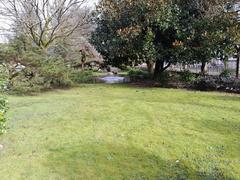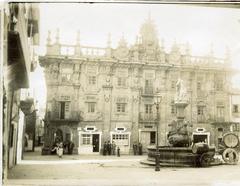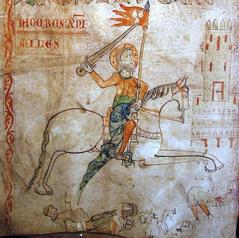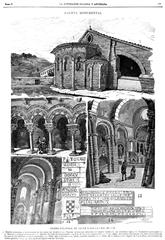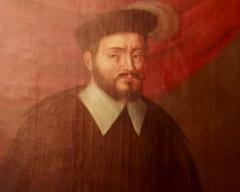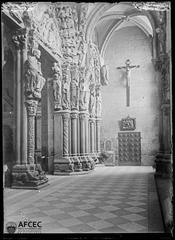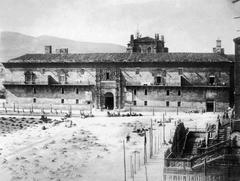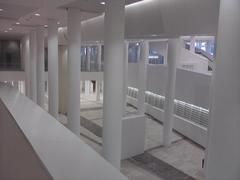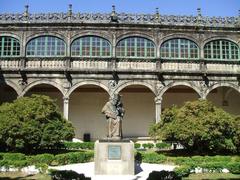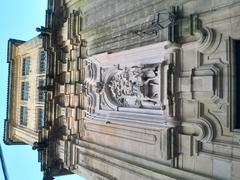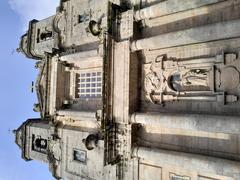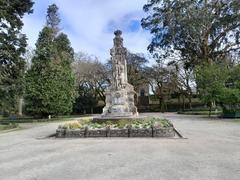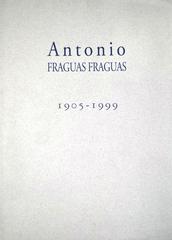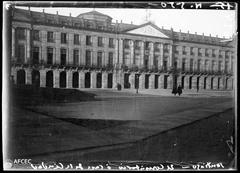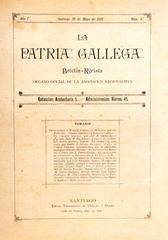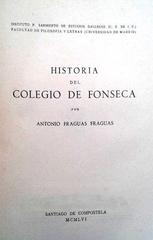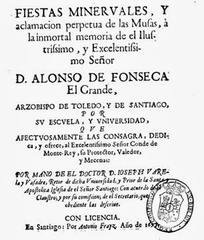
Old Town of Santiago de Compostela: Visiting Hours, Tickets, and Historical Sites Guide
Date: 03/07/2025
Introduction
Santiago de Compostela’s Old Town stands as one of Europe’s most treasured destinations, where centuries of history, religious tradition, and vibrant Galician culture converge. Revered as the endpoint of the legendary Camino de Santiago pilgrimage, this UNESCO World Heritage site offers visitors a captivating journey through medieval streets, monumental architecture, and enduring local customs. This comprehensive guide provides detailed insights into the Old Town’s history, must-see sites, visiting hours, ticketing options, accessibility, festivals, gastronomy, and travel tips—ensuring a memorable and informed visit.
Contents
- Historical Overview
- Origins and Early History
- Medieval Development and Pilgrimage
- Religious and Cultural Significance
- Urban Structure and Architectural Heritage
- UNESCO World Heritage Status
- Visiting Santiago de Compostela Old Town
- Visiting Hours and Tickets
- Accessibility
- Travel Tips
- Nearby Attractions & Accommodation
- Living Heritage, Culture & Gastronomy
- Festivals and Special Events
- Frequently Asked Questions (FAQ)
- Visuals and Resources
- Conclusion
- Sources
Historical Overview
Origins and Early History
The origins of Santiago de Compostela’s Old Town date back to the early 9th century, when the tomb of the Apostle Saint James the Greater was discovered in Galicia. This event transformed a remote forest clearing into one of Christianity’s principal pilgrimage destinations, with a shrine that evolved into the city’s magnificent cathedral (Camino de Santiago Official Portal). Ancient megalithic sites and pre-Christian traditions also influenced the spiritual landscape, later absorbed into Christian practice (Packing Up the Pieces).
Medieval Development and Pilgrimage
From the 11th century onward, Santiago de Compostela flourished as the final stop of the Camino de Santiago (Way of Saint James), one of medieval Europe’s most significant pilgrimage routes. The influx of pilgrims spurred rapid urban growth, the construction of the iconic Romanesque cathedral, and the establishment of key religious and civic institutions. The city’s name, “Compostela,” meaning “field of stars,” reflects its enduring celestial symbolism (Camino de Santiago Official Portal).
Religious and Cultural Significance
The Old Town’s identity is inseparable from its religious heritage. Pilgrims have journeyed here for centuries, experiencing both physical challenge and spiritual renewal. The cathedral, with its daily Pilgrim Mass and the awe-inspiring Botafumeiro incense ceremony, remains the heart of religious life. Institutions like the Hostal dos Reis Católicos, originally a royal hospital, exemplify the city’s long tradition of hospitality (Packing Up the Pieces).
Urban Structure and Architectural Heritage
Santiago’s Old Town is a labyrinth of narrow, cobbled streets and granite buildings, radiating from the cathedral’s central square, Praza do Obradoiro. Its architectural landscape features a harmonious blend of Romanesque, Gothic, Baroque, and Neoclassical styles, reflecting the city’s layered history (bellsandfeathers.com). Key sites include:
- Cathedral of Santiago de Compostela: Romanesque core with Gothic and Baroque additions; famed for the Pórtico da Gloria and rooftop views.
- Hostal dos Reis Católicos: Late Gothic and Renaissance former hospital, now a luxury hotel.
- Raxoi Palace: 18th-century Neoclassical city hall.
- Praza das Praterías, Praza da Quintana, Praza de Cervantes: Historic gathering places.
- University of Santiago de Compostela: Founded in 1495, contributing to the city’s academic and cultural vibrancy.
UNESCO World Heritage Status
Recognized by UNESCO in 1985, the Old Town’s medieval layout, architectural treasures, and ongoing pilgrimage traditions have been preserved with remarkable integrity (UNESCO).
Visiting Santiago de Compostela Old Town
Visiting Hours and Tickets
- Cathedral of Santiago de Compostela: Open daily, typically 7:00 AM–8:30 PM; hours may vary on religious holidays.
- Cathedral Museum & Rooftop Tours: Require tickets (€3–€12). Book online via the [official cathedral website] or at the ticket office in Praza do Obradoiro.
- Hostal dos Reis Católicos: Open to guests and visitors; reception operates 24 hours.
Accessibility
The Old Town is primarily pedestrianized, with cobblestone streets. Many main attractions, including the Cathedral, offer ramps, elevators, and accessible toilets. Some historic areas may be challenging for visitors with mobility needs.
Travel Tips
- Best Time to Visit: Spring (April–June) and early autumn (September–October) offer pleasant weather and fewer crowds.
- Getting There: The city is accessible by train, bus, and Santiago-Rosalía Airport. The Old Town is a short walk from the city center and transport hubs.
- Guided Tours: Highly recommended for in-depth historical and cultural insights. Book in advance, especially during the high season.
- Dress Code: Modest attire is expected when visiting religious sites.
Nearby Attractions & Accommodation
- Parque da Alameda: Panoramic views of the cathedral.
- Monastery of San Martín Pinario: Historic and architectural gem.
- Mercado de Abastos: Vibrant market and culinary hotspot.
- Accommodation: Ranges from luxury hotels to hostels and private apartments; book early during festivals or Holy Years.
Living Heritage, Culture & Gastronomy
Daily Life and Traditions
Old Town life is woven from a blend of ancient customs and modern vibrancy. Residents (“compostelanos”) embrace their Galician identity—expressed in the local language, music (notably the gaita bagpipes), and hospitality. Pilgrims and locals mingle in lively plazas and arcaded streets, enjoying a café culture that encourages relaxed conversation (mad-traveller.com).
Gastronomy
Galician cuisine is a highlight of any visit. Signature dishes include:
- Pulpo a Feira (octopus with paprika and olive oil)
- Empanada Gallega (savory pie)
- Zamburiñas (scallops)
- Caldo Gallego (hearty soup)
- Tarta de Santiago (almond cake)
Notable food destinations:
- Mercado de Abastos: Fresh seafood, cheese, and produce (eatandwalkabout.com)
- Casa Marcelo: Michelin-starred innovation
- O Gato Negro: Classic seafood tavern
- A Tafona: Creative tasting menus (touristsecrets.com)
Markets and Food Culture
Join a guided food tour or enjoy market-to-table experiences in the Old Town, sampling regional wines, cheeses, and artisanal products.
Festivals and Special Events
Major Annual Events
- Festas do Apóstolo (Apostle’s Festival): July, culminating on St. James’ Day (25 July) with processions, concerts, and fireworks (lotuseaters.travel).
- Festas da Ascensión: Late May/early June, featuring food stalls and open-air performances.
- St. John’s Eve (Noite de San Xoán): 23 June, celebrated with bonfires and local delicacies.
- O Son do Camiño: Music festival with international acts (songkick.com).
- Pilgrimage Ceremonies: Special masses and the Botafumeiro swing during Holy Years and major feast days (UNESCO).
Local Workshops and Cultural Activities
Participate in Galician music, craft, and gastronomy workshops at local museums and cultural centers (thetouristchecklist.com).
Frequently Asked Questions (FAQ)
Q: What are the visiting hours for the Cathedral?
A: Generally 7:00 AM–8:30 PM; check the [official website] for updates.
Q: Do I need tickets for the Cathedral?
A: Entry to the main cathedral is free; tickets are needed for the museum, rooftop, and guided tours.
Q: Is the Old Town accessible for people with disabilities?
A: Many areas are accessible, though some cobblestone streets may be uneven.
Q: What is the best time to visit?
A: Spring and early autumn for mild weather and fewer crowds.
Q: Are guided tours available?
A: Yes, both for history and gastronomy—booking ahead is advised.
Visuals and Resources
- Cathedral of Santiago de Compostela exterior and rooftop views (alt: “Santiago de Compostela Cathedral rooftop tour”)
- Praza do Obradoiro at sunrise (alt: “Praza do Obradoiro Santiago de Compostela”)
- Rúa Nova colonnades (alt: “Rúa Nova colonnades in Santiago de Compostela”)
- Parque da Alameda panoramic view (alt: “Panoramic view of Santiago Cathedral from Parque da Alameda”)
Conclusion
Santiago de Compostela’s Old Town is a living testament to Europe’s spiritual, cultural, and architectural legacy. Its medieval streets, monumental cathedral, vibrant festivals, and renowned gastronomy offer an immersive experience for pilgrims, history lovers, and cultural explorers alike. Plan your visit by checking official visiting hours, securing tickets in advance, and exploring the wealth of museums, markets, and events that make this city truly unforgettable.
Call to Action
Ready to explore Santiago de Compostela? Download the Audiala app for guided audio tours and insider tips, follow us on social media for the latest updates, and browse our related guides for more inspiration. Begin your journey today and discover the living heritage of this extraordinary city!
Sources
- Packing Up the Pieces
- walkthecamino.com
- bellsandfeathers.com
- mad-traveller.com
- Camino de Santiago Official Portal
- UNESCO
- artsandculture.google.com
- daveinspain.com
- unanchoredpassenger.com
- followthecamino.com
- eatandwalkabout.com
- touristsecrets.com
- lotuseaters.travel
- songkick.com
- thetouristchecklist.com


